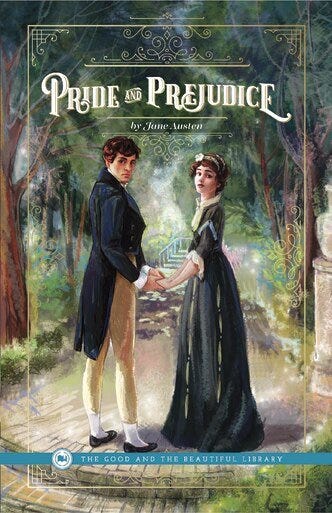"Pride and Prejudice" by Jane Austen
"Pride and Prejudice" by Jane Austen, first published in 1813, is one of the most cherished novels in English literature. Known for its wit, its insightful commentary on English social classes, and its exploration of the expectations placed on women in the early 19th century, the novel remains a favorite among readers for its depth and humor.
The story is set in rural England and follows the life of Elizabeth Bennet, one of five sisters, as her family navigates issues of marriage, morality, and misconceptions. Elizabeth's intelligent, lively, and witty personality makes her an endearing protagonist who challenges the conventions of her time. The narrative centers on the relationship between Elizabeth and Mr. Fitzwilliam Darcy, a wealthy, proud, and seemingly aloof gentleman.
The plot unfolds as Elizabeth and her sisters, whose family lacks a male heir, must marry well to secure their financial futures. This urgent need sets the stage for various romantic misunderstandings and the social commentary for which Austen is renowned. Elizabeth and Mr. Darcy's relationship is marked by a series of misjudgments and errors (hence the title's "pride" and "prejudice"), which they must overcome to understand each other and themselves better.
"Pride and Prejudice" explores themes of love, reputation, and class. Austen sharply critiques the limitations society places on women, especially regarding marriage as a social contract often necessary for economic security rather than a personal happiness.
Austen's incisive humor and the dialogue-driven narrative provide a realistic depiction of the period's manners and the constraints within which people lived their lives. "Pride and Prejudice" not only offers a window into a bygone era but also delivers timeless insights into human behavior and relationships, making it a profound study of personal and social equilibrium.

Комментарии
Отправить комментарий